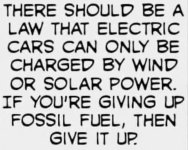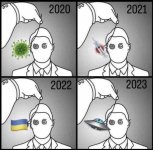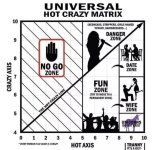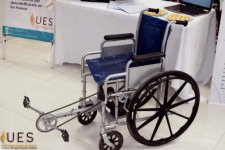You are using an out of date browser. It may not display this or other websites correctly.
You should upgrade or use an alternative browser.
You should upgrade or use an alternative browser.
Random Internet Shit you've come across
- Thread starter WJCO
- Start date
Ddays
Hooked
One more nail in the idiotic Global Warming hoax
Houston Recognizes They Have a Problem, the UHI (Urban Heat Index)
There is a link in the third paragraph that leads to this report (link below), and it's a good one. It's 60 pages long but it's worth a skim.
Basically, it's saying that the temperature sensors placed around the US that are relied upon for the temp data for some of the models is so corrupted and poorly placed, that they are basically useless.
https://heartland.org/wp-content/uploads/documents/2022_Surface_Station_Report.pdf
Highlights:
*The 2009 report found 89 percent of stations were unacceptable by NOAA’s own standards. The 2022 report found an even greater percentage of stations—approximately 96 percent—are sited unacceptably. The official U.S. temperature record, which was shown in 2009 to be heat-biased due to poor siting issues, appears to be even more biased in 2022. •Of the 128 stations surveyed, only two were found to be a Class 1 (best-sited) station: the Dubois, Idaho Agricultural Experiment Farm, and the St. Joseph, Louisiana Agricultural Experiment Farm.
*Several examples of station siting that could be categorized as “absurd” were noted during the survey. These include a GHCN station at Lava Hot Springs, Idaho—a tourist site at which the MMTS sensor was placed into a natural hole in the ground where hot water for bathing and swimming emanates from the ground; a WWTP in Ft. Pierce, Florida—where the MMTS was placed in proximity to a road, a building, and near the warm exhausts of five air conditioning units for WWTP offices; and a station in Virginia City, Nevada—at which the MMTS was not only missing its protective cap, but also placed near asphalt, generators, and air conditioning unit exhausts. Perhaps the most absurd was a USHCN station in Colfax, California, which was recently moved due to a modernization upgrade at the California fire station where it is located. The new station has been placed directly above a 20-foot rock wall that absorbs a massive amount of solar energy during the day, and releases it as LWIR at night, with heated air rising to the sensor.
Trust the science folks
Houston Recognizes They Have a Problem, the UHI (Urban Heat Index)
There is a link in the third paragraph that leads to this report (link below), and it's a good one. It's 60 pages long but it's worth a skim.
Basically, it's saying that the temperature sensors placed around the US that are relied upon for the temp data for some of the models is so corrupted and poorly placed, that they are basically useless.
https://heartland.org/wp-content/uploads/documents/2022_Surface_Station_Report.pdf
Highlights:
*The 2009 report found 89 percent of stations were unacceptable by NOAA’s own standards. The 2022 report found an even greater percentage of stations—approximately 96 percent—are sited unacceptably. The official U.S. temperature record, which was shown in 2009 to be heat-biased due to poor siting issues, appears to be even more biased in 2022. •Of the 128 stations surveyed, only two were found to be a Class 1 (best-sited) station: the Dubois, Idaho Agricultural Experiment Farm, and the St. Joseph, Louisiana Agricultural Experiment Farm.
*Several examples of station siting that could be categorized as “absurd” were noted during the survey. These include a GHCN station at Lava Hot Springs, Idaho—a tourist site at which the MMTS sensor was placed into a natural hole in the ground where hot water for bathing and swimming emanates from the ground; a WWTP in Ft. Pierce, Florida—where the MMTS was placed in proximity to a road, a building, and near the warm exhausts of five air conditioning units for WWTP offices; and a station in Virginia City, Nevada—at which the MMTS was not only missing its protective cap, but also placed near asphalt, generators, and air conditioning unit exhausts. Perhaps the most absurd was a USHCN station in Colfax, California, which was recently moved due to a modernization upgrade at the California fire station where it is located. The new station has been placed directly above a 20-foot rock wall that absorbs a massive amount of solar energy during the day, and releases it as LWIR at night, with heated air rising to the sensor.
Despite NOAA’s assertions to the contrary, climatic temperature increases as measured by nClimDiv cannot be effectively isolated from potential confounds such as heat sinks, urbanization, WWTPs, population growth, and other factors. 36 Corrupted Climate Stations - 2022 Edition In conclusion, the rate of warming as measured by unperturbed surface stations, USCRN, and UAH does not represent a climate crisis.
Trust the science folks
jesse3638
Hooked
Same thing here. My mom never blamed my teachers for my actions or falling grades. My wife is a teacher and hates dealing with parents. Little Johnny or Sally would never act that way. Why aren't you helping my kid do and turn in his/her work. Can't you just give him some extra credit or more time to get his grade up (he's had 4 weeks to get his assignments done). She wvwn had a parent last year tell her to follow their kid on the play ground and make sure he wasnt being picked on (mind you its 5th grade). The patental entitlement is out of control. I keep telling her that she just needs to tell the parents to fuck off but she wont...haha.Most parents have extracted themselves. My wife has taught elementary for 23 years. It used to be 15% of kids had issues, parents who didn't give a shit, etc. Now it is completely flipped and only 15% are involved. Until parents are held responsible for their child's education it will only get worse! Stop blaming teachers for all the stupid kids. When my dad or mom got a call from the school, I got my ass whipped. When they call a parent now, the school gets "What did the teacher do to make him act like that?"! I'm sure there may be places where there is a liberal agenda, but it isn't anywhere my wife has taught.
kevman65
Hooked
Just exactly WHAT was your search query to come up with THAT?
Lunentucker
Hooked
Lunentucker
Hooked
I LOVE shit like this
Macarena Man
Active Member
Macarena Man
Active Member
jamesrw30
Active Member
I love his channel.I LOVE shit like this

















